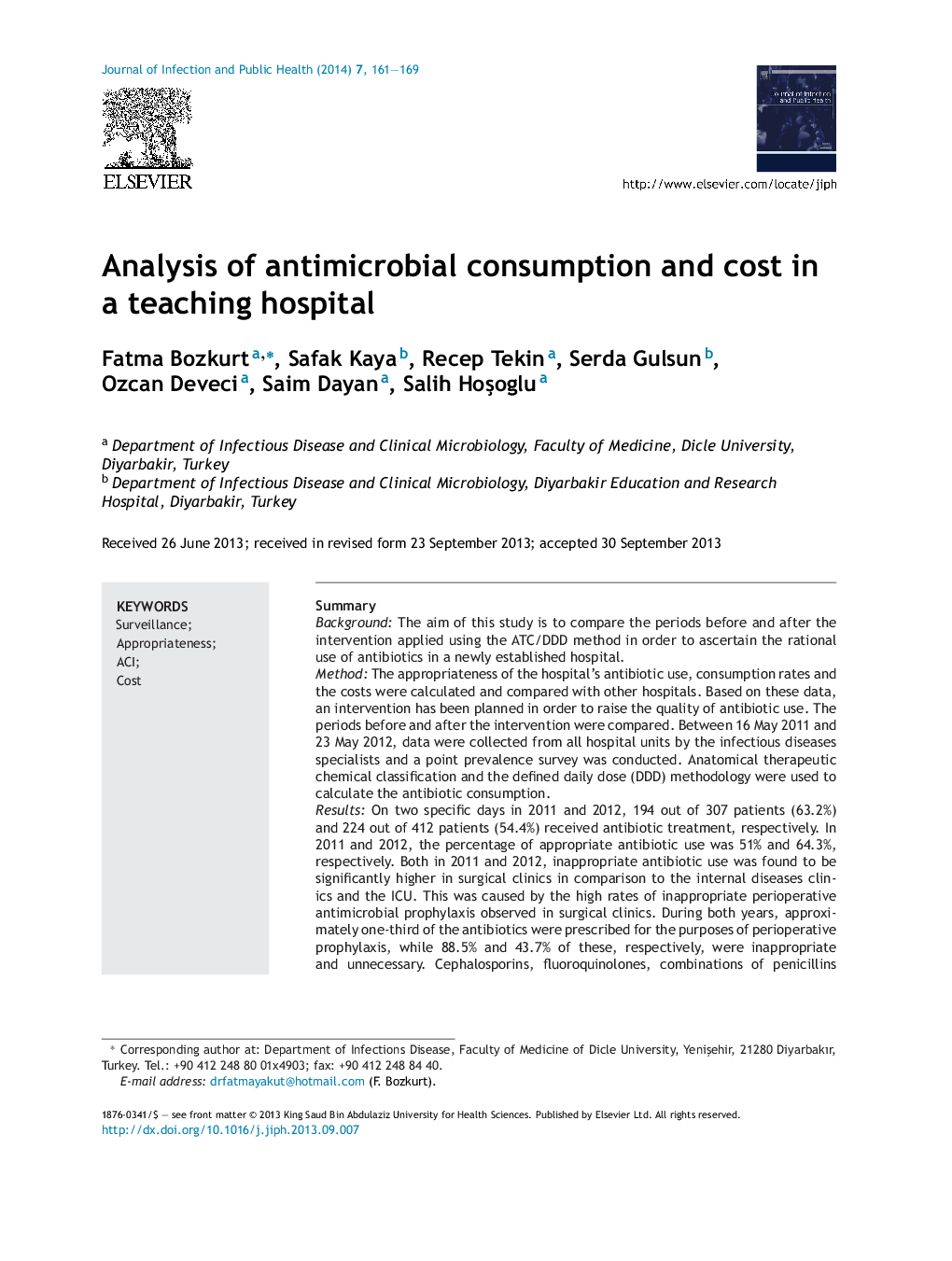| Article ID | Journal | Published Year | Pages | File Type |
|---|---|---|---|---|
| 3406274 | Journal of Infection and Public Health | 2014 | 9 Pages |
SummaryBackgroundThe aim of this study is to compare the periods before and after the intervention applied using the ATC/DDD method in order to ascertain the rational use of antibiotics in a newly established hospital.MethodThe appropriateness of the hospital's antibiotic use, consumption rates and the costs were calculated and compared with other hospitals. Based on these data, an intervention has been planned in order to raise the quality of antibiotic use. The periods before and after the intervention were compared. Between 16 May 2011 and 23 May 2012, data were collected from all hospital units by the infectious diseases specialists and a point prevalence survey was conducted. Anatomical therapeutic chemical classification and the defined daily dose (DDD) methodology were used to calculate the antibiotic consumption.ResultsOn two specific days in 2011 and 2012, 194 out of 307 patients (63.2%) and 224 out of 412 patients (54.4%) received antibiotic treatment, respectively. In 2011 and 2012, the percentage of appropriate antibiotic use was 51% and 64.3%, respectively. Both in 2011 and 2012, inappropriate antibiotic use was found to be significantly higher in surgical clinics in comparison to the internal diseases clinics and the ICU. This was caused by the high rates of inappropriate perioperative antimicrobial prophylaxis observed in surgical clinics. During both years, approximately one-third of the antibiotics were prescribed for the purposes of perioperative prophylaxis, while 88.5% and 43.7% of these, respectively, were inappropriate and unnecessary. Cephalosporins, fluoroquinolones, combinations of penicillins (including β-lactamase inhibitors) and carbapenems were the most frequently prescribed antibiotics during the study periods. The mean total antibiotic consumption was 93.6 DDD/100 bed-days and 63.1 DDD/100 bed-days, respectively. The cost of total antibacterial consumption was € 7901.33 for all the patients (€ 40.72 per infected patient) and € 6500.26 (€ 29.01 per infected patient), respectively.ConclusionEach hospital should follow and assess their antibiotic use expressed in DDD in order to compare their antibiotic use with national and international hospitals (WHO, 2009 [14]).
